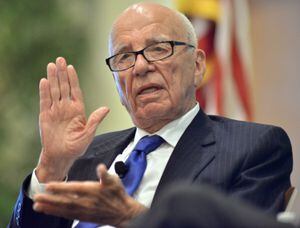Sky TV suffers fall in viewers of live Premier League games prompting debate
As viewing figures fall, questions have been asked over future for live sport on pay TV.

Last season, Premier League football suffered the biggest drop in viewing figures on Sky TV for at least seven years.
It cast doubt on the longevity of the top flight’s multi-billion pound broadcast deal.
Average viewing on Sky’s live TV channels fell 14 per cent over the season, even after it paid an eye-watering £10 million per game under the terms of its latest deal.
Total viewing hours also fell by six per cent over the course of the season for Sky, which spent a total of £4.2 billion to show 126 Premier League games every year, according to figures from Sky and BT based on the Broadcasters Audience Research Board (BARB).
Meanwhile BT, which paid £960m for its share of the rights to show 42 games each season, recorded a drop of two per cent in average viewing.
The underwhelming figures are a serious blow to TV networks that have become reliant on live sport to drive revenues for their businesses.
They also pose potential problems for Premier League clubs, whose transfer plans are increasingly reliant on television cash.
The question is, are we looking at a mere blip, or evidence of the start of a sustained change in the public’s viewing habits?
There are clearly fears that fans may be starting to turn off – something that has been unthinkable since Rupert Murdoch saved Sky TV by going all in on Premier League football in 1992.
Back then the deal was £304m for five years. Last year Sky and BT Sport paid £8.3bn to show games over three seasons.
Several reasons have been cited for the dip. One is that last season saw the absence of bigger clubs such as Aston Villa and Newcastle United from the Premier league.
Both of those sides’ televised Championship games regularly posted viewing figures of between 400,000 and 900,000 – higher than some Sky top flight games involving the likes of Bournemouth, Watford and Burnley.
Indeed, Sky said the drop in the average numbers – the worst since BARB established its current audience measurement methods in 2010 – could partly be attributed to the new rights deal that gave it 10 additional matches featuring smaller, less popular teams.
Yet research from Bloomberg says the live television audience for each of the top six teams fell in 2016/17. There is evidence of a wider shift in viewing habits.
More and more viewers are turning off their set-top TV boxes in favour of internet-based rivals such as Netflix and Amazon Prime Video.
And the ease of availability of free, illegal streams may also be taking a toll.
Despite the fall in viewing, Sky said it was encouraged that the total number of people watching Premier League coverage last season was at its highest for three years – based on people watching Premier League coverage across all its platforms for a minimum of 15 minutes.
The broadcaster pointed to a 31 per cent increase in viewing through Sky’s own streaming service Sky Go, which allows subscribers to watch on a smartphone or tablet, as well as Now TV, where football fans can buy day passes for £6.99 instead of signing up to a longer term pay-TV deal.

A spokesman for Sky said: “As we anticipated, the way customers engage with live sport is changing – with strong growth in newer, digital-first platforms – though linear viewing remains important for those big moments that matter.”
The spokesman added that live coverage of the Rio Olympic Games on the BBC in August also hit viewing figures.
While that recovered by the end of the campaign, the drop in viewing for Sky suggests a deeper shift in behaviour as broadcasters come under pressure from cheaper streaming rivals, according to analysts. A spokesperson for BT Sport said: “While BARB viewing figures are a useful barometer they don’t give the whole picture and are not our measure of success. Viewing habits are changing, with many of our customers consuming our content through digital platforms including the BT Sport App, YouTube and most recently in Virtual Reality (VR).”
But analysts have warned that the high cost of live football may be putting off viewers. An 18-month contract for eight Sky Sports channels costs an extra £27.50 per month on top of the regular Sky subscription, while BT Sport costs £22.99 a month.
Mathew Horsman, an analyst with media consultancy Mediatique, said: “This is complex but there is some suggestion younger viewers are watching all the other stuff available on multiple platforms and that the high price of subscribing to premium football is putting off subscribers.”
Analysts said the fall in TV viewing could add downward pressure on rights values – a scenario that could bring an end to television being the Premier League’s cash cow.
Only time will tell if the decline is a long-term issue for broadcasters, but it is noticeable that clubs are already looking for new ways of making money such as selling sleeve sponsorship.





